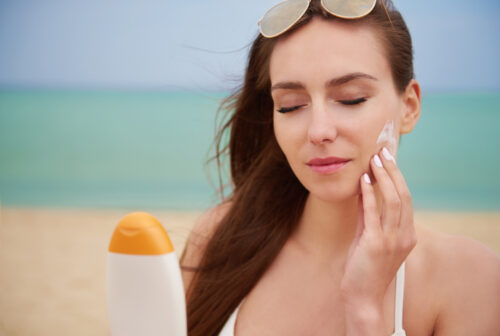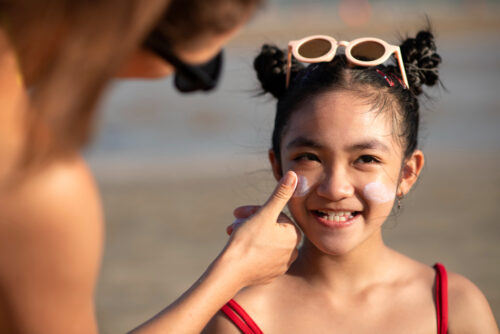How to care for your skin after sunburn
Sunburn vs. Suntan: What’s Really Happening to Your Skin?
When your skin gets too much sun, you might end up with either a sunburn or a suntan. While both are caused by UV exposure, they affect your skin in different ways.
Sunburn is essentially a skin injury. When you’re exposed to UV rays for too long, your skin cells get damaged, causing inflammation. This leads to that painful redness and sensitivity, and you may notice your skin starts to peel a few days later. The discomfort usually peaks within 6-48 hours after exposure, so it’s not something that clears up quickly. In short, sunburn is your skin telling you it’s been overexposed and needs some serious care.
On the other hand, suntan happens a bit later, usually a few days after the sun exposure. When UV rays hit your skin, they stimulate the production of melanin, the pigment responsible for giving your skin color. This is your skin’s way of trying to protect itself from further damage by darkening. While a tan might look nice, it’s a sign that your skin has been exposed to UV rays for too long, and it still needs proper care and protection.
Remember, neither a sunburn nor a suntan is healthy, so taking care of your skin afterward is crucial for long-term skin health.
Sunburn Effects: Long-Term Damage You Can’t See Right Away
Sunburn might seem temporary, but its effects can last much longer. Too much sun can damage your skin over time, leading to wrinkles, sagging, and age spots.
About 80% of visible signs of aging, like fine lines and dark spots, are caused by UV rays. This is called photoaging. UV rays break down collagen and elastin, which keep your skin firm and youthful. As these fibers weaken, your skin loses elasticity, causing sagging and wrinkles.
Sun exposure can also lead to dark spots, or age spots, especially on areas like your face, hands, and shoulders. These spots make your skin look uneven.
The takeaway: If you’re not protecting your skin, photoaging can happen faster than you think. Always wear sunscreen to keep your skin safe, even on cloudy days.
⏰Immediate Aftercare: Soothe and Heal Your Skin
After a day in the sun, your skin might feel hot, tight, or tender. Here’s how to care for it right away to help reduce damage and speed up recovery.
- Cool the Skin: The first thing you want to do is cool down your skin. This can be done with a cold compress or by splashing your skin with cool (not ice-cold) water. This helps reduce heat and prevents the burn from worsening. Avoid using extremely cold water or ice directly on the skin, as this can cause more irritation.
- Moisturize: Sunburn can strip your skin of its natural moisture, leaving it dry and vulnerable. It’s crucial to rehydrate with gentle, fragrance-free moisturizers that help lock in moisture and protect the skin’s barrier. Look for products with soothing ingredients like aloe vera or ceramides, which help support the skin’s natural healing process.
- Hydrate Internally: Hydrating from the inside out is just as important as topical treatments. Drink plenty of water to help your skin recover and replenish lost fluids. You can also support the healing process by consuming vitamins like Vitamin C and Vitamin E. Vitamin C is great for reducing melanin production and boosting collagen, while Vitamin E helps promote skin healing and reduces inflammation.
Part-Specific Aftercare: Tailoring Your Sunburn Relief for Each Area
Different parts of your body need different care after sun exposure, so let’s break down how to treat your face, body, and hair to ensure a full recovery.
- Body: For larger areas like your arms, legs, and back, a milky lotion or body gel can make application easier and more comfortable. These products are typically lighter than thick creams and provide a smooth, non-greasy layer of hydration. Make sure to apply generously to keep your skin moisturized and protect it as it heals.
- Hair and Scalp: Sunburn doesn’t just affect your skin—it can also damage your hair and scalp. UV exposure can dry out your hair, leading to split ends and even hair loss if you’re not careful. To prevent further damage, try using sun protection specifically designed for your hair, such as UV-protective sprays or wearing a hat when outdoors. Hydrating hair masks can also help restore moisture and vitality to your hair after sun exposure.
Year-Round UV Protection: Shielding Your Skin All Year Long
How To Apply Sunscreen Correctly
How to choose a Good Sunscreen
Reapplying sunscreen over makeup
It’s a common misconception that UV protection is only necessary on sunny days or during summer. In reality, UV rays are present all year round, even when it’s cloudy or cold outside. UVA rays, responsible for long-term skin damage like wrinkles and age spots, can penetrate through clouds and windows, affecting your skin’s deeper layers. UVB rays, which cause sunburn, are still strong in winter months, especially in areas with snow, where the rays are reflected.
To protect your skin year-round, always wear sunscreen with broad-spectrum protection (against both UVA and UVB rays), regardless of the season. Choose an SPF of at least 30, and reapply every two hours if you’re spending extended time outdoors. Additionally, consider wearing protective clothing, such as hats or long sleeves, and seeking shade when the sun is at its strongest. Your skin will thank you for the extra care, ensuring it stays healthy and youthful for years to come.














Post Comment